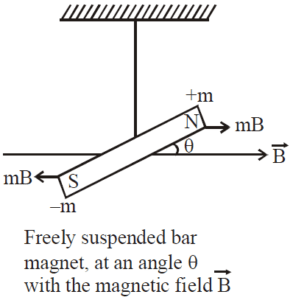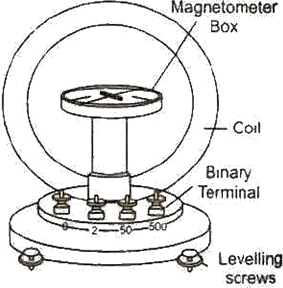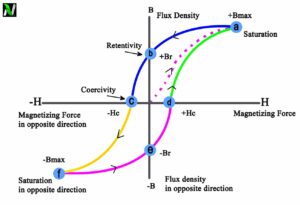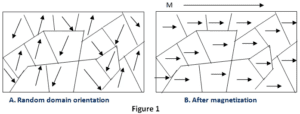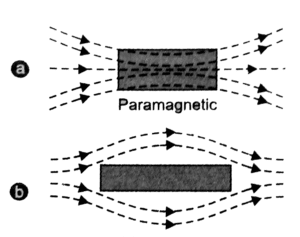On the basis of the magnetic properties of the materials, they can be divided into five main categories viz. diamagnetic, paramagnetic, ferromagnetic, ferrimagnetic, and antiferromagnetic materials.
The basic difference between the diamagnetic, paramagnetic, and ferromagnetic materials is that the diamagnetic materials are feebly repelled by the external magnetic field, and paramagnetic materials are feebly attracted towards an external magnetic field whereas ferromagnetic materials are strongly attracted towards an external applied magnetic field.

In this article, we will discuss the difference between paramagnetic, diamagnetic, and ferromagnetic materials details, so let’s get started…
What is paramagnetic materials?

The materials which get weakly magnetized in the direction of the applied magnetic field when they are placed in an external magnetic field are called paramagnetic materials. These materials have the tendency to move from a weak region to a strong region of the magnetic field i.e., they are feebly attracted towards the applied magnetic field.
The type of magnetism whereby materials are feebly attracted towards the applied magnetic field is called paramagnetism.
Read Also
Explanation of paramagnetism
Paramagnetism originates due to the presence of unpaired electrons in the materials. So due to their spin, unpaired electrons have a magnetic dipole moment and act like a small magnet. When an external magnetic field is applied, it causes the electron’s spins to align parallel to the field, which causes a net attraction. Examples of some paramagnetic materials are aluminum, oxygen, titanium, iron oxide (FeO), etc.
Read Also
What is diamagnetic materials?

Diamagnetic materials are those materials that have a tendency to move from the stronger to the weaker part of the magnetic field. When a bar magnet is placed in an external magnetic field, the field lines are repelled or expelled and the field inside the material is reduced.
Read Also
Explanation of diamagnetism
Diamagnetic are those materials in which the resultant magnetic moment in an atom is zero. When the magnetic field is applied, those electrons which have the orbital magnetic moment in the same direction slow down, and those in the opposite direction speed up. This happens due to the induced current in accordance with the Lenz law. Thus, the materials develop a net magnetic moment in the direction opposite to that of the applied magnetic field and hence, it repels.
Read Also
Some examples of diamagnetic materials are Bismuth, Copper, Silicon, Nitrogen (at standard temperature and pressure i.e., STP), Water, and Sodium chloride.
What is ferromagnetic materials?

Ferromagnetic materials are those materials that get strongly magnetized when placed in an external magnetic field. These materials have a strong tendency to move from a region of the weak magnetic field to a region of the strong magnetic field. This means they are strongly attracted to the magnets.
Read Also
Explanation of ferromagnetism?
The individual atoms (or ions or molecules) in a ferromagnetic material possess a dipole moment as in a paramagnetic material. However, they interact with each other in such a way that they spontaneously align in a common direction over a macroscopic volume called a domain. Each domain has net magnetization. When an external field is applied to these materials, the domains orient themselves in the direction of the applied magnetic field, and simultaneously the domain grows in size.[latexpage]
Read Also
In some ferromagnetic materials, the magnetization persists even after the removal of the external magnetic field. Such ferromagnetic materials are called hard ferromagnets. Examples of such ferromagnetic materials are Alnico (an alloy of iron), Aluminium, Nickel, Cobalt, Copper, and Loadstone. But, there are also such materials in which magnetization disappears on the removal of the external magnetic field, such materials are called soft ferromagnets. Examples of such soft ferromagnets are soft iron, Silicon Iron Alloys, Nickel-Iron Alloys.
Comparative study of magnetic materials
Comparative study of paramagntec, diamagnetic, and ferromagnetic materials.
| S.No | Properties | Paramagnetic materials | Diamagnetic materials | Ferromagnetic materials |
|---|---|---|---|---|
| 1. | Effects of magnets | They are weakly attracted towards the magnets | They are weakly repelled by the magnets | They are strongly attracted towards the magnets |
| 2. | In an external magnetic field | Acquire weak magnetization in the direction of the applied magnetic field | Acquire weak magnetization in the opposite direction of the applied magnetic field | Acquire strong magnetization in the direction of the applied magnetic field |
| 3. | In a non-uniform magnetic field | Slowly moves from the weaker part to the stronger part of the magnetic field | Slowly moves from the stronger part to the weaker part of the magnetic field | Quickly moves from the weaker part to the stronger part of the magnetic field |
| 4. | In a uniform magnetic field | A freely suspended paramagnetic rod aligns itself parallel to the applied magnetic field | A freely suspended diamagnetic rod aligns itself perpendicular to the applied magnetic field | A freely suspended ferromagnetic rod aligns itself parallel to the applied magnetic field |
| 5. | Susceptibility value $(\chi_m)$ | Susceptibility value is small and positive i.e $0<\chi_m <\epsilon$ where $\epsilon$ is a small number | Susceptibility value is small and negative i.e $-1\leq\chi_m<0$ | Susceptibility value is large and positive i.e $\chi_m >1000$ |
| 6. | Relative permeability $(\mu_r)$ | Slightly greater than 1, i.e $1<\mu_r<1+\epsilon$ | Slightly greater than 1, i.e $0\leq\mu_r<1$ | Of the order of thousands i.e $\mu_r>1000$ |
| 7. | Permeability value $(\mu)$ | $\mu>\mu_0$ | $\mu<\mu_0$ | $\mu>>>\mu_0$ |
| 8. | Effects of temperature | Susceptibility varies inversely with temperature. | Susceptibility is independent of temperature. | Susceptibility decrease with the temperature in a complex manner |
| 9. | Removal of the magnetizing field | Magnetization lost as soon as magnetizing field removed | Magnetization last as long as magnetizing field applied | Magnetization persists even after magnetizing field removed |
| 10. | Variation of M with H | M changes linearly with H and attains saturation level at low-temperature in a strong field. | M changes linearly with H | M changes non-linearly with H and ultimately attains saturation level |
| 11. | Hysteresis effects | B-vector shows no hysteresis | B-vector shows no hysteresis | B-vector shows hysteresis |
| 12. | Physical state | Solid, liquid, or gas | Solid, liquid, or gas | Generally solid only |
| 13. | Examples | Al, Na, Ca. etc | Bi, Cu, Pb. etc | Fe, Ni, Co, Gd. etc |
Stay tuned with Laws Of Nature for more useful, and interesting content.

